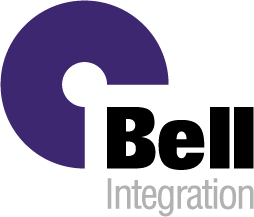How many times at home do you put off doing household chores or paying bills until the last possible moment?
It is the same for high-volume low-value spend, also known as tail spend. Companies have been procrastinating when it comes to addressing these areas. But they are now realising successful management of this spend area can yield large cumulative returns and mitigate the risks that often exist in unmanaged transactions.
The challenge with tail spend is that it is difficult to control and often one-off, making it unpredictable and inefficient to manage with the existing pressure on procurement resources.
Bell Integration has been working with businesses as an extended procurement function, offering a turnkey solution to manage the end-to-end procurement of such spend.
Customers are leaving 20 per cent of their global spend unchallenged
Sales director Neil Pratt says many companies are unable to manage or review smaller value transactions made by their employees or procurement departments.
For many, the collective size of this tail spend, so-called because of the Pareto principle in economics, is unknown because individual purchases are often made outside purchasing controls, such as off contract or non-purchase order spend.
“If customers continue not focusing on the tail, they are leaving 20 per cent of their global spend unchallenged,” Pratt warns. “In this day and age, leaving 20 per cent of spend, and risk associated, unaddressed is a major challenge for businesses.”
His comment is supported by an enormous body of research. Last year, research conducted by Boston Consulting Group found that companies managing tail spend through digital means alone can cut their annual expenditures by 5 to 10 per cent.
But Pratt believes that there are even more substantial savings to be made, noting artificial intelligence (AI) solutions alone may be unable to deliver the largest possible reward.
“Robotics and AI-driven tools struggle with tail spend because it is a lot of one-off spends, so you don’t necessarily have the data to build up the algorithms,” he says.
Edward Long, Bell Integration’s head of pre-sales and analytics for procurement management, explains that the company instead works with clients to understand their full tail scope and the size of the potential opportunity to make savings.
He adds that this can be outside the traditional 20 per cent due to the client’s specific circumstances on what is deemed unmanaged. This is done by extracting data from different internal sources and bringing this together into one digestible format before running deep analysis using Bell’s datapoints and category expertise.
“From this, we can go back to the client and say, ‘Here is your total scope and savings opportunity’,” says Long. Clients then agree the areas of spend to be managed by Bell.
Not only does this generate savings, but Bell’s unique model of contracting directly with the supplier rapidly reduces complexity as all suppliers, and associated supplier management activities and costs, are now handled by Bell from day one.
“This allows the client to focus on strategic initiatives that deliver maximum value to stakeholders, while Bell drive efficiencies and compliance in the lower value spend areas,” Long explains.
In addition to the financial savings, there are other advantages to harnessing the skills of Bell Integration’s’ procurement services. Doing so can improve levels of regulatory compliance and ensure managed suppliers sign up to correct contractual standards as agreed with the customer.
Long notes that while companies often have strict contractual procedures in place for larger spends, there is often nothing for smaller items, even though such transactions collectively total a sizeable sum.
Not having a structured agreement in place for this spend can expose companies to several risks beyond the financial ones.
“These risks can be reputational, operational, financial or regulatory and are often unrelated to contract size,” he says.
“We run the due diligence on the suppliers and also negotiate savings and contractual terms, which means clients get greater visibility of the ever-changing risk profile as well as the total cost of their tail.”
For more information please visit bell-integration.com



